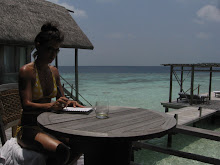Dub Reggae Night at the Elbo Room in San Francisco was tough to get to considering it was only a ten minute walk from my apartment. Sunday nights weren't typically reserved for going out, but the promise of a dull work week ahead prompted me to get in one last weekend outing.
What is dub reggae?
Dub is a version of existing music that is electronically rearranged. Think cutting and pasting elements of a song to create another version of it.
Dub is a sculpture of sounds using echo and reverb effects and scientifically layered beats set to a trance-inducing tempo. While strips of the original lyrics fade in and out, tracks are mostly instrumental. Dub is reggae on hallucinogenics.
It all started in Kingston, Jamaica, in the Sixties. Two people are credited with pioneering the genre–Osbourne Ruddock, better known as King Tubby, and Lee "Scratch" Perry, who is over 70 years old, still performing, and I had the pleasure of seeing in concert in 2007.
Here's one story of how dub came to life:
Reggae is meat-and-potatoes to Jamaican culture. The country has endured a history of impoverishment, Rhude Boy gangs, and overall political/social/economic instability*. Dancehalls were where people could listen to reggae on a sound system and dance. They were more than the local watering hole–they were an oasis from the turbulence at home and on the streets . They were also the social and illegal affairs networking hub of towns. If there was no music in the evenings, the consequences were proven to be grim, even catastrophic at times, resulting in riots. There simply had to be music, which made the sound system operators and repairmen gods.
A little problem. A sound system error occurred one hot night in Jamaica. It is said to have opened the floodgates to a new genre of music: Dub. A packed club with a broken soundboard forced the MC that night to improvise. As he tinkered with various records, sound levels, and timing, the fragments of sounds caught the ear of Lee "Scratch" Perry, and the rest is history.**
Back in San Francisco, opening MCs started around 8pm at the Elbo Room, but the place wasn't in full swing until 10pm when the best sets came on. I liked getting there early to see how the crowd evolved, but it also meant pacing the amount of Red Stripes I sipped while listening to the early grooves of the night. But sometimes soberness made the whole vibe of the place even more intoxicating.
You can dance to dub. Or you can sway to the roll of the snare drum. Or you can just bob you head to the bone-chilling tinge of the high hat. Anything goes, which is another beautiful aspect of dub. You can move to your own intimate interpretation of the hypnotic beats.
All sorts come to Dub Night in SF. Your yupsters, your Rastafarians dressed to the nines in robes and turbans, and your token hippies smoking weed in the corner making it a truly Rastafarian atmosphere.
In a way Dub Night was like being at a hostel. Everyone is there for a specific reason, but everyone is also having their own experience. Since Dub is a niche genre of music, everyone knows they have at least one thing in common with everyone else in that room. And that thing, the music, is all anyone cares about in that moment. It's a peaceful and satisfying existence for a few hours.
*Watch the film The Harder They Come starring Jimmy Cliff for an accepted depiction of the times.
**This could be a tall tale, so don't quote me.




No comments:
Post a Comment